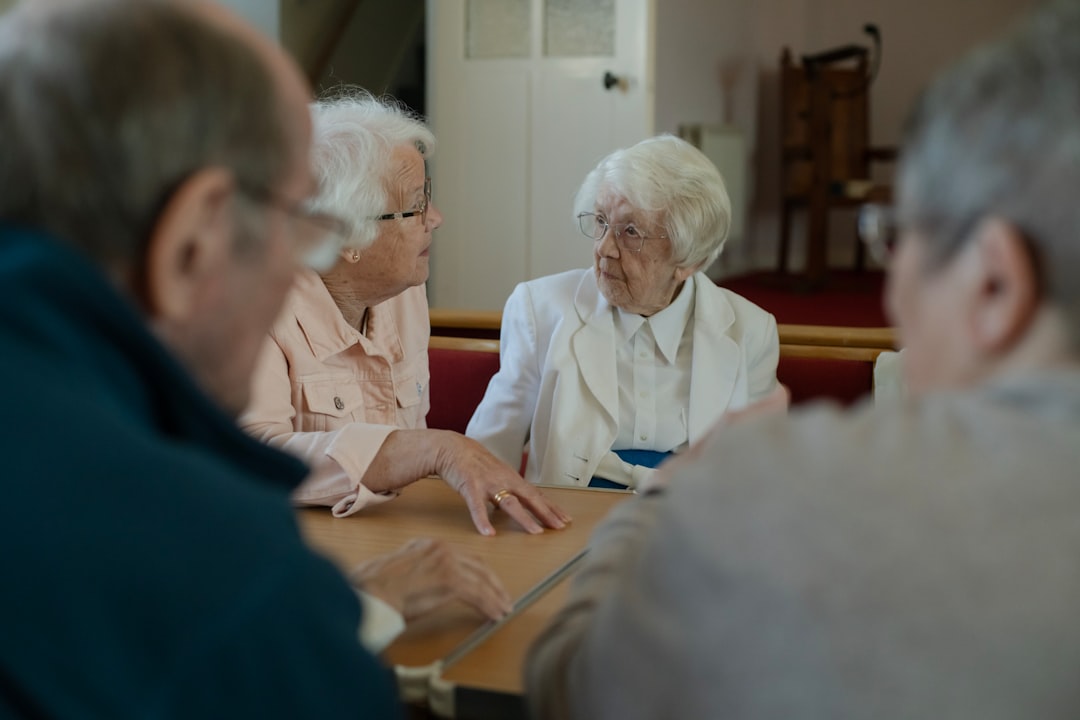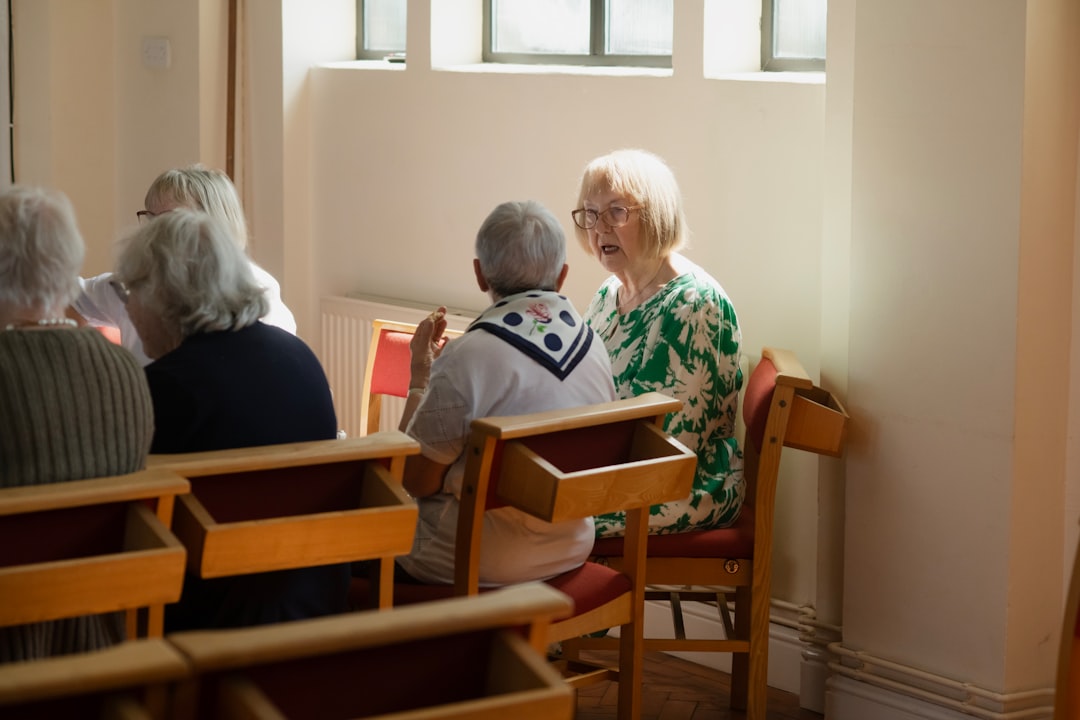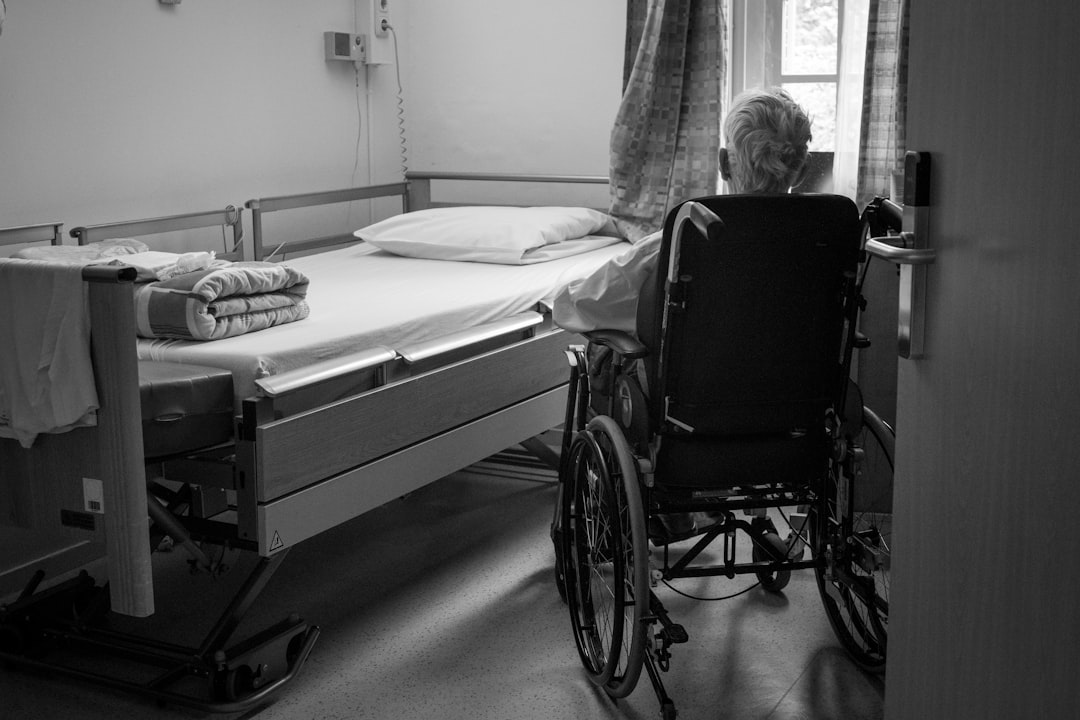

Engage prospects with a scan and streamline customer engagement with FREE QR code marketing tools by Sona – no strings attached!
Create a Free QR CodeFree consultation

No commitment

Engage prospects with a scan and streamline customer engagement with FREE QR code marketing tools by Sona – no strings attached!
Create a Free QR CodeFree consultation

No commitment
In today’s digitally connected world, the bridge between physical facilities and digital engagement is more critical than ever for rest homes. Many administrators struggle to capture timely, high-quality QR feedback from residents and families, compounded by legacy workflows like paper surveys, anonymous comment boxes, or inaccessible reporting channels. These fragmented touchpoints can leave care gaps undetected until they escalate, undermining trust and compliance efforts.
QR codes have emerged as a compelling response, enabling instant and trackable QR codes feedback collection without the friction of account creation or app downloads. For rest homes dealing with missed opportunities and incomplete resident sentiment data, QR codes support real-time feedback loops, turning even fleeting physical visits into actionable insights while reducing staff dependency on manual follow-up. Leveraging QR technology, organizations can systematically elevate the voice of every resident and visitor, giving operational teams the transparency needed to drive rapid, responsive improvements in care, training, and family communication.
This guide provides a practical roadmap for rest home leaders ready to integrate QR technology into workflows and senior care marketing, demonstrating how to move beyond data blind spots, gather meaningful feedback at every touchpoint, and build a system of engagement that supports both compliance and satisfaction. By embedding QR codes into daily routines, facilities unlock richer insights and show a genuine commitment to continuous care improvement.

Rest homes frequently battle low survey response rates and outdated feedback because paper forms are easily overlooked or quickly become irrelevant. This delay results in missed resident concerns and prevents timely identification of high-value trends or urgent issues. QR codes address these challenges by linking physical locations directly with real-time, personalized digital surveys, making it simpler to gather authentic input as experiences occur and to act before problems grow.
A structured plan helps ensure that QR feedback programs deliver both participation and actionable insights. By replacing analog processes with dynamic, trackable links and clear calls to action, your teams can focus on what matters most: improving the resident and family experience. The following steps emphasize not only where and how to deploy QR codes but also how to measure success and iterate quickly.
By leveraging a unified QR code management solution that automates code creation, deployment, and data syncing with CRM or resident management systems, rest homes empower teams to focus less on manual collection and more on actionable improvement. Platforms such as Sona QR streamline the entire process, from design to analytics, which boosts participation and closes longstanding visibility gaps in care quality.
Rest homes routinely struggle with fragmented feedback channels. Visitors and residents may hesitate to fill out paper forms, while staff can miss important service insights if reporting tools are inconsistent or hard to access. These gaps leave care teams unaware of emerging issues, which risks declining satisfaction, delayed interventions, and missed compliance triggers that are costly to rectify later.
QR codes are a natural fit for environments where immediacy and ease of use are essential, as shown by senior living trends. They turn existing physical assets into gateways to digital action, making feedback fast and convenient for every stakeholder. Administrators gain timely insights that can be connected to service records, staff training, and facility audits, creating a continuous loop of learning and improvement.
Typical applications include QR codes on appointment cards for post-visit satisfaction, flyers for wellness surveys, and communal posters for event feedback. Each of these once-hard-to-measure touchpoints becomes a reliable source of operational insight, informing both strategic planning and day-to-day service decisions.

Many rest homes are limited by one-size-fits-all feedback tools and static information handouts. Generic surveys cannot capture the nuance of resident experiences, and printed contact lists go out of date quickly. QR codes provide flexible formats that better match the variety of interactions inside a care facility.
Selecting the right format ensures that each scan triggers the intended action. For example, a meal satisfaction survey needs a short web form, while a family member requesting a callback benefits from a pre-filled email or SMS. When facilities standardize these formats on a secure, centralized platform, they can design consistent experiences while remaining adaptable to changing needs.
A modern, secure QR platform ensures each interaction is tailored, traceable, and aligned with privacy requirements. Sona QR, for instance, centralizes format selection, branding, analytics, and CRM syncing so your team can manage the full lifecycle of QR assets from one dashboard.

A pervasive challenge in rest homes is pinpointing the source of friction during the resident and family journey. Intake can be confusing, dining preferences shift, and maintenance requests may stall without visibility. Traditional feedback channels blur these moments together, which makes it hard to invest in the right improvements.
QR codes help differentiate these touchpoints by location and context. With unique codes placed strategically, you can measure where engagement is strong and where it lags, then respond accordingly. The result is a participation heatmap that guides staffing, communication, and facility updates.
By aligning QR placement with the rhythms of life in a rest home, you capture more complete sentiment and service data. This map of engagement helps prioritize staffing, training, and updates in the areas that will most quickly improve resident well-being and family satisfaction.

Traditional feedback mechanisms often fail to capture who is engaging and which needs are unmet. QR codes not only increase participation but also attach context to each response, revealing patterns that would otherwise remain hidden. For additional context in senior settings, see this overview for care homes.
Below are three of the highest-impact use cases for rest homes. Each can be piloted quickly and expanded as you gather results.
By centralizing and time-stamping each digital interaction, rest homes connect feedback to larger patterns across staffing, scheduling, and facilities management. Analytics will show whether satisfaction is rising, which interventions are working, and where further investment is needed.
A consistent challenge for rest homes is distinguishing between engaged and disengaged visitors in order to optimize follow-up and communication. Without segmentation, families receive generic updates that do not address their specific concerns, and staff waste time on broad outreach that fails to create trust.
QR codes transform anonymous traffic into intent-rich signals. Each scan captures context such as location, time, and content interest, which can be synced to your CRM or resident management system. You can then tailor messaging to the audience’s role and preferences, making follow-up more relevant and timely.
With platforms like Sona QR, each code becomes a smart entry point into your engagement system. You capture data that helps you differentiate between, for example, a new visitor seeking information and a long-term family member interested in care plan updates, then nurture each appropriately.
Rest homes often struggle to connect offline interactions with digital insights that inform marketing and service improvement. Daily routines involve printed signage, family conversations, and activity calendars, yet much of that engagement is untracked. QR codes bridge these gaps so you can measure and improve every touchpoint.
Integration does not require a complete overhaul. Start by adding QR codes to the materials you already use, then connect scan data to your analytics and CRM. Over time, you will see which placements and messages drive action, allowing you to optimize your mix.
A centralized platform such as Sona QR lets you manage all codes, monitor performance, and sync scan data with your CRM and email tools. This closed loop turns offline engagement into a measurable, optimizable part of your marketing and resident experience strategy.
Launching a QR campaign in a rest home environment requires attention to accessibility, privacy, and operational fit. A thoughtful approach ensures that codes are easy to scan, that the destination experience is simple to complete, and that data feeds into the right systems for timely action.
Use the following steps to plan, deploy, and optimize your campaign. Begin with a focused use case, measure results, and expand based on what your data reveals. The goal is to create an iterative cycle of improvement rather than a one-time initiative.
Start with a clear objective and a single, high-impact scenario. For example, improve meal feedback response rates from 15 percent to 40 percent, increase visitor satisfaction response volume within 48 hours of a visit, or accelerate maintenance resolution time for non-urgent requests.
Choose the format that best fits your goal. For most feedback and communication requirements, dynamic QR codes are ideal because they support tracking, editing, and A/B testing without reprinting.
Make each scan as effortless as possible. Good design significantly increases participation, especially among seniors and busy visitors.
Place QR codes where people already look and where feedback is most relevant. Small pilots help refine placements before a broader rollout.
Use analytics to understand performance and make improvements. QR campaigns are living programs that benefit from continuous refinement.
A major risk in many rest homes is collecting feedback without converting it into action. When data sits in spreadsheets or remains disconnected from care and compliance records, the signal gets lost. Facilities then miss chances to intervene early, refine staff training, and document quality improvements for audits.
A strong analytics framework brings the journey from scan to insight into focus. It includes capture of core metrics, consistent tagging and attribution, and integration with your CRM or resident management system. When built correctly, it allows managers to spot issues quickly, coordinate responses, and measure the impact of interventions.
With Sona QR and Sona.com, you can capture detailed scan data, enrich contacts in platforms like HubSpot and Salesforce, and connect QR engagement to outcomes. Sona.com’s identity resolution and revenue attribution capabilities help trace the influence of scans on meetings scheduled, care plan updates requested, or other key actions. This end-to-end visibility turns QR codes from a convenience into a measurable driver of care quality and operational performance.
QR deployments sometimes underperform when accessibility, staff enablement, or data hygiene are neglected. Elderly residents may hesitate to scan without guidance, and busy staff may forget to promote new tools if they are not trained and incentivized. A few best practices can dramatically lift adoption and data quality.
Focus on accessibility, clarity, and feedback loops. When residents and families see that their input leads to real change, trust grows and participation increases. Staff should also feel supported by workflows that reduce, not increase, administrative burden.
Small pilots with direct observation and A/B testing help identify barriers quickly. By iterating on placement, design, and calls to action, you create a virtuous cycle that improves both participation and outcomes.

Many rest homes still rely on infrequent, batch-style feedback processes. These methods often fail to capture the nuances of daily experiences, leading to missed opportunities for quick wins. Real-world QR deployments show how targeted, data-driven approaches can reverse that trend.
The most successful programs are pragmatic and incremental. They start with one or two critical touchpoints, publicize the change, and use early results to refine and expand. The following examples illustrate the types of gains facilities can achieve.
These examples highlight the combination of increased participation, faster resolution, and better documentation that QR-enabled workflows can deliver. The common thread is a relentless focus on ease of use and closing the feedback loop.
Even with the best intentions, QR rollouts can falter if the user experience is cumbersome or if staff buy-in is missing. Residents may struggle with small print or low-contrast designs, and codes placed in dimly lit areas can be difficult to scan. Avoidable missteps can undermine an otherwise strong strategy.
By planning for real-world conditions and monitoring performance, you can maintain momentum and build trust. The following tips and pitfalls are based on patterns seen across senior care deployments.
Following these practices helps transform each scan into a sustained source of operational insight and satisfaction. You create a steady cadence of listening and action that benefits residents, families, and staff alike.
QR codes have evolved from simple digital signposts into indispensable tools for rest homes seeking a responsive, data-driven approach to care. By turning everyday interactions into opportunities for real-time feedback and insight, rest homes can overcome longstanding obstacles to measuring satisfaction, meeting compliance requirements, and iterating on services. When combined with secure, trackable analytics, QR code-driven processes help administrators surface hidden needs, close care gaps, and build genuine trust with both residents and families.
To get started, pilot one or two use cases that address known pain points such as meal feedback or visitor satisfaction. Use a dynamic, trackable platform like Sona QR to design accessible codes, monitor scan behavior, and sync data with your CRM or resident management tools. As you learn, expand thoughtfully across the facility. Over time, your QR program becomes a backbone for continuous improvement, transparent communication, and high-quality care. Start creating QR codes for free.
QR codes have transformed the rest homes industry by turning traditional feedback collection into a dynamic, real-time engagement tool. Whether it’s gathering resident and family insights, enhancing care quality, or streamlining communication, QR codes simplify the feedback process while capturing valuable data to improve service delivery and resident satisfaction. Imagine instantly knowing which areas of care need attention and being able to respond promptly to enhance the living experience.
With Sona QR, you can create dynamic, trackable QR codes in seconds, update feedback campaigns without reprinting materials, and connect every scan to actionable insights that drive continuous improvement. No more missed feedback or delayed responses—just smarter, resident-focused care powered by data.
Start for free with Sona QR today and transform every scan into meaningful feedback that elevates your rest home’s quality and reputation.
QR codes enable instant, trackable feedback collection from residents and visitors without requiring apps or accounts, turning physical visits into actionable insights that improve care, communication, and training.
QR codes improve feedback response rates, provide real-time data, reduce manual processing, increase transparency, support dynamic content updates, and enhance resident and family satisfaction.
QR codes link feedback and communication directly to resident profiles and care records, enabling timely issue resolution, data-driven staff training, and compliance documentation.
Security concerns include protecting resident data privacy, preventing unauthorized access, and ensuring encrypted, role-based access to scanned information, which can be addressed by using secure QR platforms with privacy controls.
Rest homes can place QR codes in strategic locations like dining areas, activity rooms, and visitor check-in desks that link to short, mobile-friendly surveys, enabling residents and visitors to provide timely and accessible feedback.
Use Sona QR's trackable codes to improve customer acquisition and engagement today.
Create Your FREE Trackable QR Code in SecondsJoin results-focused teams combining Sona Platform automation with advanced Google Ads strategies to scale lead generation

Connect your existing CRM

Free Account Enrichment

No setup fees
No commitment required

Free consultation

Get a custom Google Ads roadmap for your business






Launch campaigns that generate qualified leads in 30 days or less.
